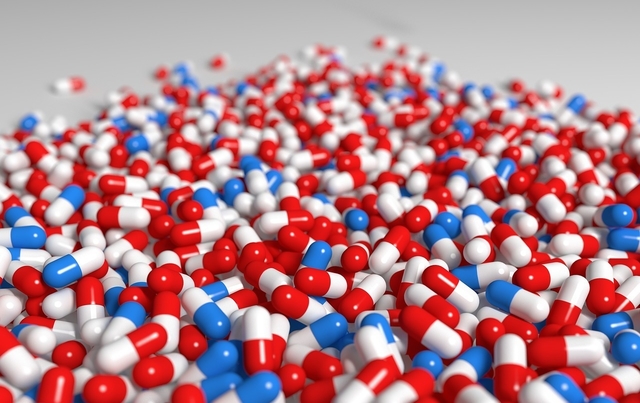A new study published in World Psychiatry discusses trends in treatment and prevalence of mood disorders across four countries: Australia, Canada, England, and the U.S. Results point to increases in the prevalence of mood disorders, even though each country has also had increases in treatment availability. The authors, each one based out of a different country, posit different theories as to why this occurs.
“All four countries have had increases in rates of treatment for these disorders since the 1990s… Despite these changes, none of the four countries had any evidence for a reduction in prevalence of disorders or symptoms over the period. If anything, there were indications of changes in the opposite direction in Australia, England and the US,” wrote the authors.

Mental health issues, particularly mood disorders, are a common source of disability amongst developed countries. In 2001 the World Health Organization made recommendations as to how to close the “treatment gap” – an issue which arises out of the high number of ‘mental disorder’ diagnoses in developing countries, compared to the number of individuals receiving some kind of treatment. As the authors of this paper state, in order to close this “treatment gap” it has been suggested that treatment services need to be augmented. However, no other study has actually reported on whether this increase in services has led to a reduction in the prevalence of ‘mental disorders.’
For this study, the authors conducted a review to evaluate, “whether increases in treatment provision have been associated with a reduction in prevalence of common mental disorders,” particularly as it relates to mood and anxiety disorders in adults. The authors reviewed studies published between 1990 and 2015, focusing on epidemiology and trends of these disorders.
The authors discuss the increased resources and treatments in each of the countries, including increases to access in care, increases in mental health workers, provision of psychological therapies, and use of antidepressants and other pharmacological agents. In the U.S. specifically, antidepressant medication treatment saw a marked increase compared to other countries. Results showed that although all four countries had seen increases in treatments for mood and anxiety disorders, there was no evidence for reduction of prevalence or reduction of related symptoms. Conversely, for Australia, England, and the U.S. the trends of prevalence of mental disorders and disability were on the rise.
In addition to highlighting these trends, the authors discussed the possibility of a masking of this reduction, and of reasons for this occurrence. Although they considered any masking due to changes in risk factors or increased awareness of mental health issues, the authors found no support for either of these theories. The authors also examined possibilities such as the quality of treatment and the use of preventive services. For these, the authors found evidence of both the poor quality of treatment in all the countries and the lack of preventative services. They further underline the fact that each of these countries has a lack of focus on preventive factors, such as lifestyle behaviors and school and work environments.
The authors end by focusing on these gaps that could be contributing to the increase in prevalence, “… to reduce the prevalence of common mental disorders, we may also need to reduce a “quality gap”… There may also be a “prevention gap”, where resource allocation to reducing incidence through prevention has lagged efforts to reduce duration of disorders through treatment.”
****
Jorm, A. F., Patten, S. B., Brugha, T. S., & Mojtabai, R. (2017). Has increased provision of treatment reduced the prevalence of common mental disorders? Review of the evidence from four countries. World Psychiatry, 16(1), 90-99. (Abstract)















Yes its on the rise. There are large number of people who get ‘addicted’ to treatment, more and more every day. Rehab and group therapy becomes a lifestyle, a way of life. It becomes like the bar scene without the alcohol and the usual phony ass bar scene way of fulfilling the need to socialize and be around people, a substitute. Nothing wrong with support groups its just a shame how the psychiatric, pharmaceutical and insurance industries control most of it outside AA and NA and taking part in the psychiatric pharma and insurance company ‘care’ model includes a label and almost always a constant ingestion of pills by default to go with that label the diagnosis billing code.
And of course the way they keep you coming back the profit motive.
Report comment
What the study appears to highlight is how “mental health treatment” is totally ineffective and simply captures more and more people without providing any effective results whatsoever. A psychiatric diagnosis is a diagnosis for life. The profession refuses to see that recovery is possible and, indeed, it is nigh on impossible once hooked on psychiatry’s drugs and weighted down with the concrete boots of a DSM diagnosis.
In reality it stigmatises people and gets them hooked on both diagnoses and addictive “medication” (ie legally prescribed drugs). The nature of psychiatry is to consign people to the scrap heap of permanent disability while it’s practitioners and drugs companies rake in enormous profits.
So why does anyone let it continue? I don’t get it!
Report comment
Because they get money and prestige (or power) from it. Sadly, these are more important to some people than helping fellow humans. Especially when they perceive us as subhuman.
Report comment
And could it be that these very “wonder drugs” known as the “antidepressants” actually end up causing the very thing that they’re supposed to treat? They’re certainly great for inducing a zombie state in the person taking them so that they are removed and cut off from their emotions and feelings. I would not call this creating a greater quality of life for people in distress. And we won’t even go into all the other things, like sexual dysfunction, possibility of heart attacks, and the horrendous withdrawal if and when a person tries to get off them.
Report comment
I’m in the midst of horrendous withdrawal. Not suicidal–partly from lack of energy. Sometimes I feel like going back on the drugs or at least quitting the taper; giving up in that respect. Often feel hopeless of being happy again in this life.
Have to pretend I have CFIDS to family and friends. They think going off my “meds” would make me violent and incoherent like a rabid dog. Since I act exhausted and ill (physically) they attribute my behavior to something else that doesn’t fit their mental image of Meds Non-Compliant Bipolar.
Report comment
I think this should be entitled “Because of Increase in Treatments, Prevelence of Mental Health Issues Climbs” instead.
Especially since the ADHD drugs and antidepressants create the “bipolar” symptoms. And the “bipolar” recommended treatments, especially combining the antidepressants and/or antipsychotics, create what appears to the doctors to be the negative symptoms of “schizophrenia,” via neuroleptic induced deficit syndrome, as well as what appears to the doctors to be the positive symptoms of “schizophrenia,” via anticholinergic toxidrome. And since neither of these psychiatric drug induced syndrome/toxidrome are listed in the DSM, they are almost always misdiagnosed as one of the billable DSM disorders, thus promising future iatrogenic harm.
I was struck with the lack of exploration into the possibility that today’s “mental health” treatments actually iatrogenically create the symptoms of the DSM disorders, and this is why we see increased treatment equated with increased harm.
Report comment
MHS is worth of total *demolition.It’s wicked and genocidal System!1 300 000 deaths,each year!So much
about *care* in MHS-legal carnige and chemical genocide,against crazy population!
Report comment
Pretty damning of any campaigns to promote psychiatry then.
Report comment
The cookie cutter, one-size-fits-all” “treatment” is very likely the very cause of much of the rise in “illness”. Let’s face the facts. The recovery rate before the advent of thorazine and Haldol in the 50’s was at least 60%. The recovery rate today is about 15%, if we’re lucky. Psychiatry and the drug companies took something that was episodic and changed it into something that is now chronic and on-going. And it was done in the name of power and profits. How disgusting.
Report comment
Dat’s Capitalism!
Kerchung
All the way to the bank
Report comment
First thought: is this a joke? Of course, “mental disorder labels” are increasing. Of course, treatment isn’t wiping them out.
1. The labels are inventions of the treatment industry.
2. The DSM is designed to expand the numbers of people described as “mentally ill”. IV created all sorts of new psych-labels. 5 made it easier to diagnose people through the labels that exist.
3. Much prevention is seen as a matter of early detection, something that is, in fact, causative. There is no reliable litmus test to determine whether what you detect is actual or not.
4. One thing they really need to investigate, bottom rung of the corruption chain, is the disability industry. The numbers aren’t going down, for one thing, because “treatment” has become a gateway into “mental health” work. (More workers means a greater capacity for provision and, therefore, more patients.)
5. Drug maintenance and recovery are world’s apart. You are not going to eliminate the need for medical care by making drug addicts of your patients. There is this great need for a paradigm change now because doctors are doing just that.
6. Physicians are now seeing physical health and “mental health” as inter-related. The problem with this perspective is that “physical treatments” for “mental ill health conditions” often cause “physical ill health”. Psychiatrists, in this scenario, are blaming iatrogenic (physician caused) conditions on “mental illness”. Point: Disease is not the cause of any injury done by the physician.
Hypochondria and addiction are seen as genetically determined disorders in some instances. If thinking you have diseases that you don’t have is a disease, what then? Ditto, the feeling that the choice of taking drugs was made for you by your ancestors. Well, I leave it to you to consider the unconsidered limits of this kind of perspective.
Report comment
Despite the availability of “treatment?” Or because of?
Report comment
What “mental health” issues? You mean suffering caused by psychiatry?
Isn’t this the basic point of Anatomy of An Epidemic?
Report comment
Let me play devil’s advocate here, Oldhead. I suffered long periods of sadness or depression and nervousness or anxiety before I ever saw a shrink. Unfortunately the treatments drove me into full-blown psychosis/madness/losing-touch-with-consensual-reality. You name it; it wasn’t good.
In the old days people–usually women–simply suffered through these emotions. Charlotte Bronte had nervous problems. She would receive visits from a family friend; and only be able to answer the woman’s questions after turning her back to her by twisting in her own chair. Not exactly “normal.”
Just think, if Charlotte had been lucky enough to receive “treatments” she might never have written Jane Eyre or Villette.
By the way, I believe Bertha Rochester–the madwoman in the attic–in Jane Eyre was not “mentally ill.” She probably had late stage syphilus. Her husband tells Jane that she went mad from her debauched lifestyle. My guess would be syphilus or a wet brain from alcoholism. Biological psychiatry would not have helped her either.
Report comment
There is no such thing as mental illness or ‘mood disorders’.
There are people who are delegitimized and marginalized, and who have had to learn to cope with such.
But they should never be treated as subjects for study, and doing so is just further abuse.
Nomadic
Report comment